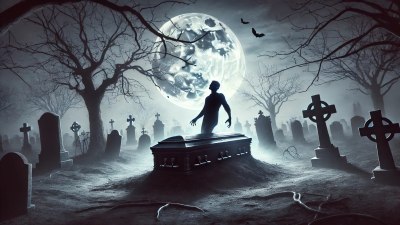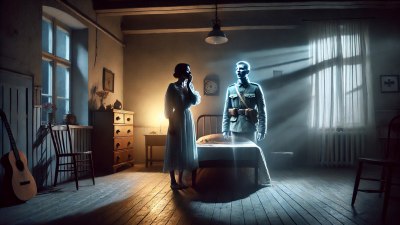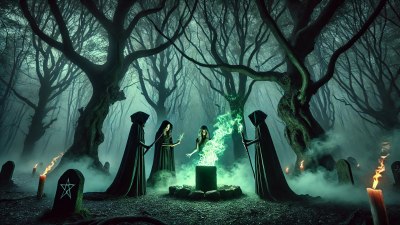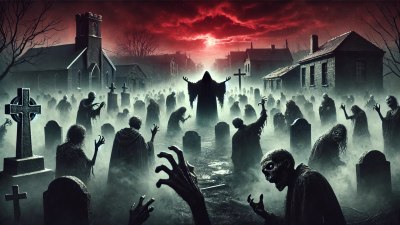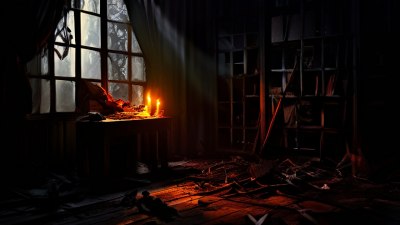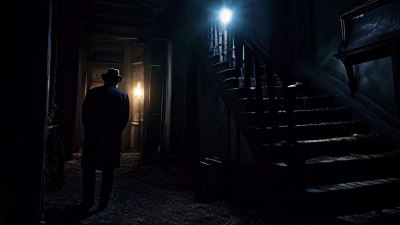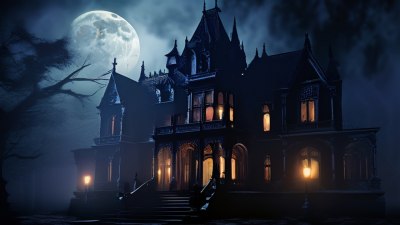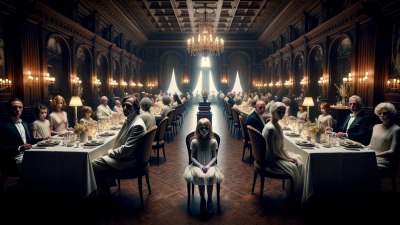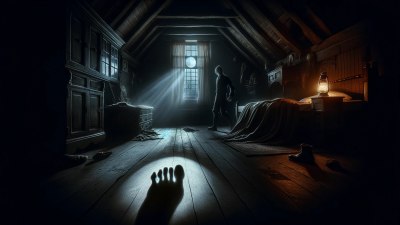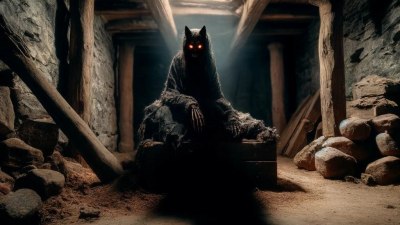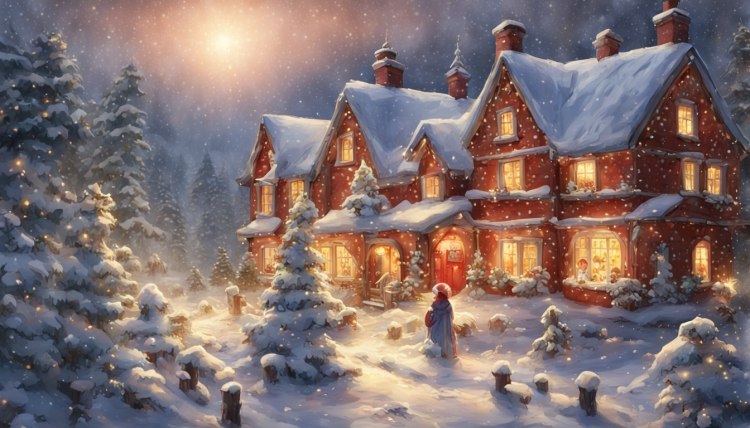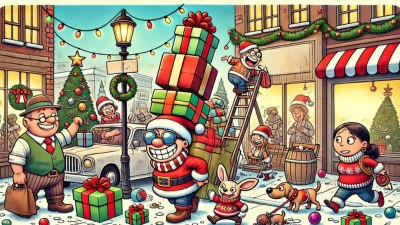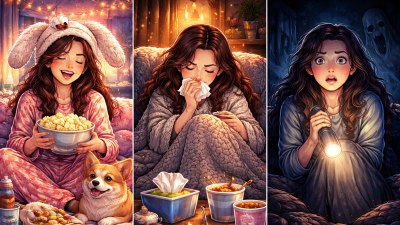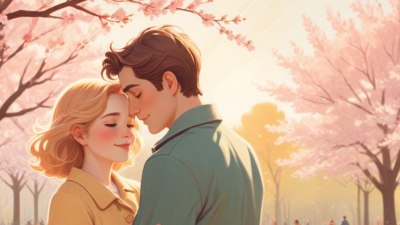The Dead Woman’s Photograph (Ghost Story)
Virgil Hoyt, a photographer's assistant in St. Paul, is tasked with photographing a deceased woman at the request of her wealthy Jewish family. Although he dislikes such assignments, he takes the pictures and later discovers something inexplicable...
Virgil Hoyt is a photographer’s assistant up at St. Paul, and a man of a good deal of taste. He has been in search of the picturesque all over the West, and hundreds of miles to the north in Canada, and can speak three or four Indian dialects, and put a canoe through the rapids. That is to say, he is a man of an adventurous sort and no dreamer. He can fight well and shoot well and swim well enough to put up a winning race with the Indian boys, and he can sit all day in the saddle and not dream about it at night.
Wherever he goes he uses his camera.
“The world,” Hoyt is in the habit of saying to those who sit with him when he smokes his pipe, “was created in six days to be photographed. Man--and especially woman--was made for the same purpose. Clouds are not made to give moisture, nor trees to cast shade. They were created for the photographer.”
In short, Virgil Hoyt’s view of the world is whimsical, and he doesn’t like to be bothered with anything disagreeable. That is the reason that he loathes and detests going to a house of mourning to photograph a corpse. The horribly bad taste of it offends him partly, and partly he is annoyed at having to shoulder, even for a few moments, a part of someone’s burden of sorrow. He doesn’t like sorrow, and would willingly canoe 500 miles up the cold Canadian rivers to get rid of it. Nevertheless, as assistant photographer, it is often his duty to do this very kind of thing.
Not long ago he was sent for by a rich Jewish family at St. Paul to photograph the mother, who had just died. He was very much put out, but he went. He was taken to the front parlor, where the dead woman lay in her coffin. It was evident that there was some excitement in the household and that a discussion was going on, but Hoyt wasn’t concerned, and so he paid no attention to the matter.
The daughter wanted the coffin turned on end, in order that the corpse might face the camera properly, but Hoyt said he could overcome the recumbent attitude and make it appear that the face was taken in the position it would naturally hold in life, and so they went out and left him alone with the dead.
The face was a strong and positive one, such as may often be seen among Jewish matrons. Hoyt regarded it with some admiration, thinking to himself that she was a woman who had been used to having her own way. There was a strand of hair out of place, and he pushed it back from her brow. A bud lifted its head too high from among the roses on her breast and spoiled the contour of the chin, so he broke it off. He remembered these things later very distinctly and that his hand touched her bare face two or three times.
Then he took the photographs and left the house.
He was very busy at the time and several days elapsed before he was able to develop the plates. He took them from the bath, in which they had lain with a number of others, and went to work upon them. There were three plates, he having taken that number merely as a precaution against any accident. They came up well, but as they developed he became aware of the existence of something in the photograph which had not been apparent to his eye. The mysterious always came under the head of the disagreeable with him, and was therefore to be banished, so he made only a few prints and put the things away out of sight. He hoped that something would intervene to save him from attempting an explanation.
But it is a part of the general perplexity of life that things do not intervene as they ought and when they ought, so one day his employer asked him what had become of those photographs. He
tried to evade him, but it was futile, and he got out the finished photographs and showed them to him. The older man sat staring at them a long time.
“Hoyt,” said he, at length, “you’re a young man, and I suppose you have never seen anything like this before. But I have. Not exactly the same thing, but similar phenomena have come my way a number of times since I went into the business, and I want to tell you there are things in heaven and earth not dreamt of----”
“Oh, I know all that tommy-rot,” cried Hoyt, angrily, “but when anything happens I want to know the reason why, and how it is done.”
“All right,” said his employer, “then you might explain why and how the sun rises.”
But he humored the younger man sufficiently to examine with him the bath in which the plates were submerged and the plates themselves. All was as it should be. But the mystery was there and could not be done away with.
Hoyt hoped against hope that the friends of the dead woman would somehow forget about the photographs, but of course the wish was unreasonable, and one day the daughter appeared and asked to see the photographs of her mother.
“Well, to tell the truth,” stammered Hoyt, “those didn’t come out as well as we could wish.”
“But let me see them,” persisted the lady. “I’d like to look at them, anyway.”
“Well, now,” said Hoyt, trying to be soothing, as he believed it was always best to be with women--to tell the truth, he was an ignoramus where women were concerned--“I think it would be better if you didn’t see them. There are reasons why----” he ambled on like this, stupid man that he was, and of course the Jewess said she would see those pictures without any further delay.
So poor Hoyt brought them out and placed them in her hand, and then ran for the water pitcher, and had to be at the bother of bathing her forehead to keep her from fainting.
For what the lady saw was this: Over face and flowers and the head of the coffin fell a thick veil, the edges of which touched the floor in some places. It covered the features so well that not a hint of them was visible.
“There was nothing over mother’s face,” cried the lady at length.
“Not a thing,” acquiesced Hoyt. “I know, because I had occasion to touch her face just before I took the picture. I put some of her hair back from her brow.”
“What does it mean, then?” asked the lady.
“You know better than I. There is no explanation in science. Perhaps there is some in psychology.”
“Well,” said the lady, stammering a little and coloring, “mother was a good woman, but she always wanted her own way, and she always had it, too.”
“Yes?”
“And she never would have her picture taken. She didn’t admire herself. She said no one should ever see a picture of hers.”
“So?” said Hoyt, meditatively. “Well, she’s kept her word, hasn’t she?”
The two stood looking at the pictures for a time. Then Hoyt pointed to the open blaze in the grate.
“Throw them in,” he commanded. “Don’t let your father see them--don’t keep them yourself. They wouldn’t be good things to keep.”
“That’s true enough,” said the lady, slowly. And she threw them in the fire. Then Virgil Hoyt brought out the plates and broke them before her eyes.
And that was the end of it--except that Hoyt sometimes tells the story to those who sit beside him when his pipe is lighted.
👻
This story is part of "Twenty-Five Ghost Stories" by W. Bob Holland. Read all the stories from this enchanting collection HERE!
✍✍✍
The story you've just experienced is a work of fiction, a creation of the imagination meant to entertain, provoke thought, and inspire. From the heart-fluttering highs of love stories to the spine-tingling chills of horror, these stories are unbound by the mundane. Whether you're in the mood for a quick escape or a deep dive into fantastical realms, explore the place where imagination echoes beyond the ordinary - Echoes of Imagination!
